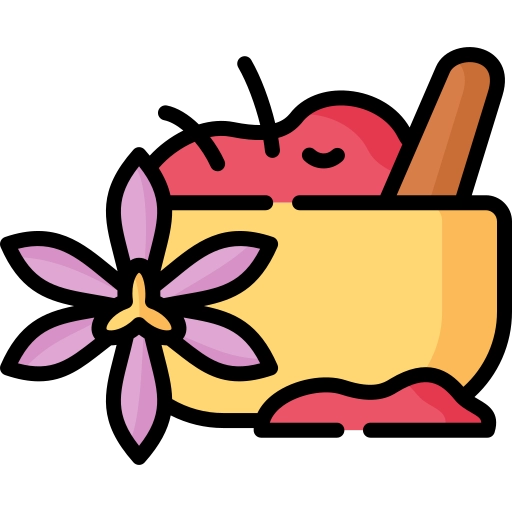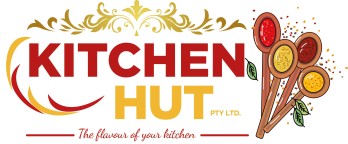General
The Role Of Spices In Traditional South African Medicine
- By: Niaz Bhati, category: General
- Last updated on April 14, 2025
Spices have long played a central role in South African cuisine and traditional medicine. For centuries, indigenous communities have relied on natural herbs and spices to prevent illness, treat common ailments, and maintain general well-being. In traditional South African healing practices, many spices found in kitchens today were valued for their medicinal properties. These natural remedies were passed down through generations and remain an important part of South Africa's cultural and holistic health traditions.
In this article, we explore the fascinating connection between spices and traditional South African medicine, examining their uses and benefits and how they continue to influence wellness practices today.
A Blend of Traditions and Beliefs
Traditional South African medicine is a rich tapestry woven from the diverse cultural backgrounds found within the country, including Zulu, Xhosa, Sotho, and Tswana healing traditions. Many communities rely on isangoma (traditional healers) and inyanga (herbalists) who possess deep knowledge of indigenous plants, roots, and spices.
Spices, often combined with herbs, roots, and animal products, form part of remedies used for:
-
Digestive problems
-
Infections and fevers
-
Inflammation and pain relief
-
Respiratory conditions
-
Spiritual cleansing and protection
The integration of spiritual belief systems with herbal medicine gives traditional South African healing its unique character. Spices are not just seen as physical remedies but also as tools for restoring spiritual balance.
Popular Spices Used in Traditional Medicine
Many common culinary spices hold medicinal value in traditional practices. Below are some of the most widely used spices in South African traditional medicine:
1. Ginger (Umhlonyane)
Ginger is highly valued for its ability to provide warmth and its anti-inflammatory effects. In traditional medicine, it's used to:
-
Treat colds, flu, and sore throats
-
Soothing nausea and indigestion
-
Alleviate joint pain and arthritis
-
Stimulate circulation
Ginger tea or ginger powder combined with honey is a widely used treatment for alleviating flu symptoms.
2. Turmeric
Known for its bright yellow color, turmeric powder is considered a powerful natural healer due to its active compound, curcumin.
-
Used to reduce inflammation and swelling
-
Believed to purify the blood
-
Used externally to promote the healing of wounds and treat skin infections
-
Combined with milk or water to relieve internal infections
3. Garlic (Ugalikhi)
Garlic is often used for its immune-boosting and antimicrobial properties.
-
Eaten raw or crushed into teas for treating colds and chest infections
-
Used to lower blood pressure
-
Believed to ward off negative spiritual energy
Some traditional healers use garlic in spiritual cleansing rituals to "cleanse the body and spirit."
4. Clove (Ikalavhu)
Clove is highly valued for its antiseptic and pain-relieving qualities.
-
Served as a natural treatment for dental pain and gum infections
-
Infused in teas to aid digestion and kill parasites
-
Incorporated into therapeutic oils for alleviating muscle pain and reducing inflammation
Clove oil is also used in traditional massages to ease tension and pain.
5. Cinnamon (Isinamonu)
Cinnamon is both a flavorful spice and a traditional medicine staple.
-
Used to control blood sugar levels
-
Enhances digestion and relieves bloating
-
Considered helpful in reducing menstrual pain
-
Sometimes added to spiritual baths or cleansing water
Other Herbs and Roots Often Combined with Spices
Traditional healers often combine spices with indigenous South African herbs such as:
-
Umhlonyane (African wormwood) for flu and fevers
-
Impepho (used in spiritual rituals and respiratory conditions)
-
Sutherlandia (cancer bush) for immune support and energy
These herbs are often stepped into teas or burned as part of spiritual ceremonies, and when paired with spices like ginger and cinnamon powder, their healing power is believed to intensify.
Methods of Preparation and Use
Spices are used in various forms depending on the ailment being treated:
1. Herbal Teas and Decoctions
Spices like ginger, clove, and cinnamon are boiled in water with other herbs to create powerful healing teas. These are consumed to treat colds, stomach issues, and inflammation.
2. Poultices and Pastes
Ground spices are mixed with water or oils to form pastes that are applied to the skin to treat:
-
Swelling
-
Infections
-
Wounds and bruises
3. Steams and Inhalations
Boiling water infused with spicy herbs is inhaled as a steam treatment for congestion, colds, and sinus infections.
4. Spiritual Use
Spices are used in rituals for protection, cleansing, and to repel bad energy. Smudging with impepho and cloves is common in ancestral practices.
Modern Interest in Traditional Healing
With the rise of natural and holistic health movements, traditional South African medicinal practices are gaining renewed interest. Many people are turning to these time-tested remedies as alternatives or complements to modern medicine.
-
Spices are being studied scientifically for their healing properties.
-
Modern herbalists and health stores often stock traditional spice-based remedies.
-
There is an increasing recognition of the significance of safeguarding indigenous knowledge.
Health-conscious individuals now embrace turmeric shots, ginger teas, and garlic tonics – many of which have roots in traditional African healing methods.
Challenges and Cultural Preservation
Despite their benefits, traditional practices face challenges such as:
-
Lack of formal documentation
-
Loss of knowledge due to modernization
-
Misunderstanding and marginalization by mainstream health systems
Efforts by traditional healers, ethnobotanists, and cultural organizations aim to preserve and validate these practices through research, education, and collaboration.
Conclusion
Spices have always held a prominent place in traditional South African medicine, serving both physical and spiritual roles in healing. From ginger and turmeric to clove and garlic, these everyday kitchen staples carry centuries of wisdom and wellness benefits. Their use in teas, steams, poultices, and rituals continues to shape the way many South Africans view health today.
As the world moves toward more natural and integrative health solutions, there's much to learn from South Africa’s rich tradition of spice-based healing. Whether used for their warming qualities, disease-fighting properties, or cultural significance, spices remain powerful allies in both ancient and modern wellness.

KitchenHut (Pty) Ltd
The Flavour Of Your KitchenCategories
Recent Posts
-
The Role Of Spices In Traditional South African Medicine
Read More -
Turn Your Everyday Meals Into Gourmet Dishes With These Spice Tips
Read More -
What To Look For When Choosing The Best Chili Powder For Cooking
Read More -
Benefits Of Buying Cinnamon, Clove, And Ginger In Bulk
Read More -
The Science Of Spices: How They Enhance Flavor And Health
Read More
Related Blog
Turn Your Everyday Meals Into Gourmet Dishes With These Spice Tips
- By: Niaz Bhati
- Last updated on April 10, 2025
What To Look For When Choosing The Best Chili Powder For Cooking
- By: Niaz Bhati
- Last updated on April 7, 2025
Benefits Of Buying Cinnamon, Clove, And Ginger In Bulk
- By: Niaz Bhati
- Last updated on March 31, 2025
The Science Of Spices: How They Enhance Flavor And Health
- By: Niaz Bhati
- Last updated on March 28, 2025
How To Identify High-Quality Spices: A Buyer’s Guide
- By: Niaz Bhati
- Last updated on March 26, 2025
 Whole spices
Whole spices Ground Spices
Ground Spices Blog
Blog About Us
About Us FAQ
FAQ Contact Us
Contact Us Home
Home
 Cart
Cart
 Account
Account







